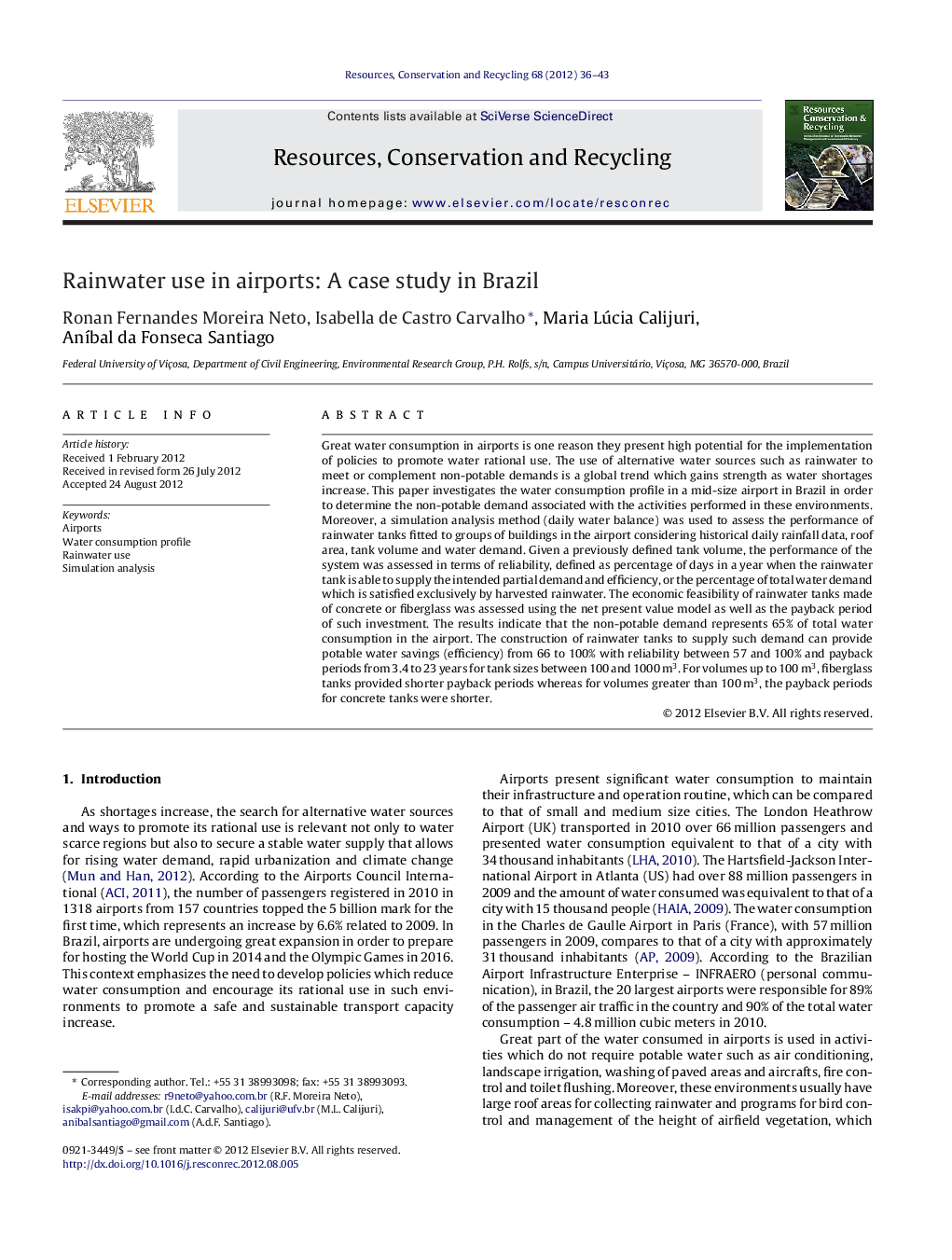| کد مقاله | کد نشریه | سال انتشار | مقاله انگلیسی | نسخه تمام متن |
|---|---|---|---|---|
| 1063240 | 1485721 | 2012 | 8 صفحه PDF | دانلود رایگان |

Great water consumption in airports is one reason they present high potential for the implementation of policies to promote water rational use. The use of alternative water sources such as rainwater to meet or complement non-potable demands is a global trend which gains strength as water shortages increase. This paper investigates the water consumption profile in a mid-size airport in Brazil in order to determine the non-potable demand associated with the activities performed in these environments. Moreover, a simulation analysis method (daily water balance) was used to assess the performance of rainwater tanks fitted to groups of buildings in the airport considering historical daily rainfall data, roof area, tank volume and water demand. Given a previously defined tank volume, the performance of the system was assessed in terms of reliability, defined as percentage of days in a year when the rainwater tank is able to supply the intended partial demand and efficiency, or the percentage of total water demand which is satisfied exclusively by harvested rainwater. The economic feasibility of rainwater tanks made of concrete or fiberglass was assessed using the net present value model as well as the payback period of such investment. The results indicate that the non-potable demand represents 65% of total water consumption in the airport. The construction of rainwater tanks to supply such demand can provide potable water savings (efficiency) from 66 to 100% with reliability between 57 and 100% and payback periods from 3.4 to 23 years for tank sizes between 100 and 1000 m3. For volumes up to 100 m3, fiberglass tanks provided shorter payback periods whereas for volumes greater than 100 m3, the payback periods for concrete tanks were shorter.
► The paper assesses the water consumption profile (end-uses) in airport environments.
► It evaluates the performance of rainwater tanks using a simulation analysis method.
► Results show that 65% of the water is used to meet non-potable demands.
► At least 66% of the non-potable demand can be met by most of the tank sizes tested.
► Payback periods range from 3.4 to 23 years for tanks between 100 and 1000 m3.
Journal: Resources, Conservation and Recycling - Volume 68, November 2012, Pages 36–43